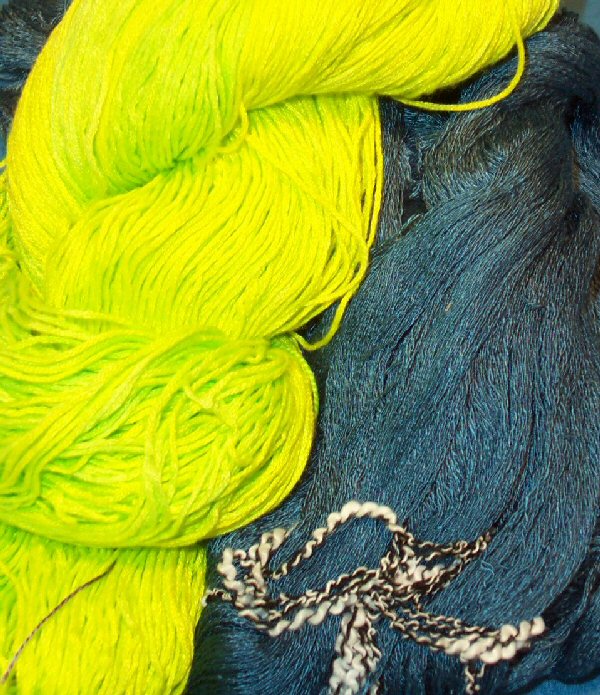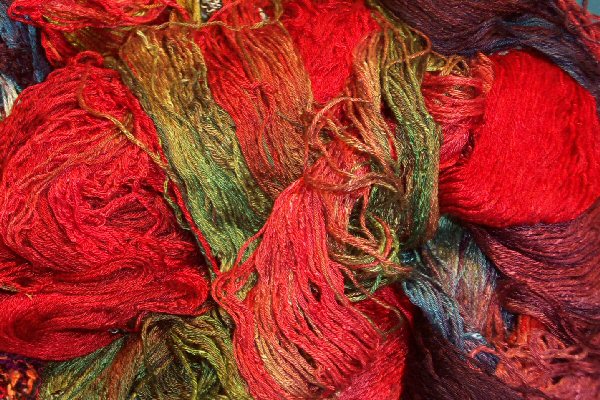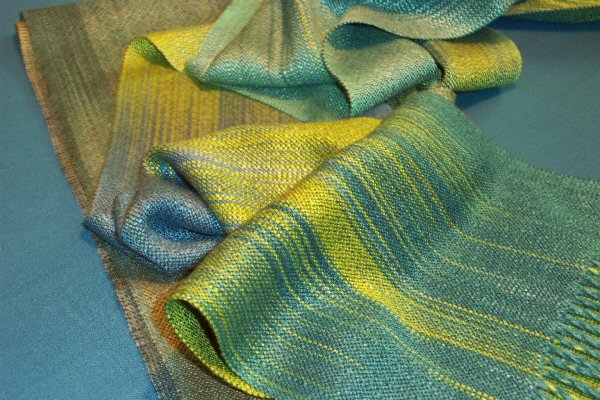During the 1800s, there was a great deal of innovation and invention. One of the areas that benefited from this time of scientific discovery was textiles. It was during this time that regenerated cellulose was developed, although it had been postulated years earlier.
The first attempts at creating regenerated cellulose fibers were not very successful and some of them were abandoned as being not very practical. Initially called artificial silk, by 1924 the fiber was renamed “rayon” and improvements in the process brought viscose rayon to the market.
Let’s look at rayon fiber and its unique characteristics.

Viscose rayon is generally made from wood. The wood is treated with a caustic soda solution, which converts the wood into alkali cellulose and allows the wood to react with carbon disulphide to form cellulose xanthate. This is then turned into a viscous solution, which is extruded through a spinneret to form filaments, which are then passed through a solution of sulphuric acid. The viscous solution then solidifies. The filaments are formed of cellulose and are referred to as regenerated cellulose.
Tencel (lyocell)
By the 1990s, industry had refined a process that recovered and reused the solvent chemicals (amine oxide), which broke the cellulose down into a viscous solution. The yarn from this process differed somewhat from viscose rayon and was given the generic name lyocell.
Searching for other cellulose sources than wood, China, which has an abundance of bamboo, began using bamboo as the cellulose source.
As of 2011, in North America, all regenerated cellulose yarns are to be labelled “rayon” even though the different regenerated fibers do not have exactly the same fiber characteristics.
Viscose
The word “viscose” can be used for any natural polymer (long chain molecule), cellulosic or regenerated cellulose filament or staple fiber.
According to Textile Science by E. P. G. Gohl and L. D. Vilensky, cupramonium (or cupro) regenerated cellulose is made using an aqueous cuprammonium hydroxide solvent in which the cellulose is dissolved to form the viscous solution. Polynosic (or modal) is regenerated cellulose made by a process giving high tenacity and a high wet modulus. Modal will remain stronger and will distort less than cupro rayon when wet.
The majority of rayon fibers available to today’s hand weaver are viscose rayon or regenerated bamboo. While Tencel was fairly common in the 1990s and early years of this century, there seem to be fewer options for hand weavers. Tencel is now primarily available as a 2/8 size (cotton count) with about 3360 yards per pound.
During extrusion via the spinneret, it is possible to have different shapes for the nozzles, which can affect the look and feel of the fibers. The simplest shape is a round nozzle, which will produce a very lustrous smooth fiber.
Other shapes will produce fibers with less luster. The fiber can also be treated to have crimp, which will further affect the character of the fibers. How the fibers are spun will affect the character as well.
Regenerated cellulose fibers drape very well, but if the fibers are spun tightly the degree of drape will be affected, as can the luster.

Fiber characteristics
- Strength: Depends upon the type of rayon
- Flexibility: Good
- Elongation: Low
- Recovery: Poor
- Elasticity: Low
- Resilience: Low
- Density: Medium
- Absorbency: High
Burn Test
- Heat resistance: 177 C /350 F
- In flame: Burns quickly
- Removed from flame: Continues burning
- Odor: Smells of burning paper
- Residue: Very little ash

Artificial silk
As the name implies, rayon was developed to provide a low-cost substitute for silk. As such, it is generally seen to have luster, drape and an ability to accept dyes for deep rich colors.
The chemical composition of rayon is that of cellulose, so it will decompose unlike synthetic fibers based on petroleum products.
Rayon is seen by some as being a not very good choice in terms of the environment because the standard rayon process puts chemicals into the water shed and uses trees for the cellulose source. Bamboo is touted as being “greener” than standard rayon because bamboo grows much faster than trees. (According to National Geographic, the species of bamboo used for fiber source matures in 3 months, while a tree takes years before it can be harvested.)
The usual end products for rayon are garments or fashion accessories. Many weavers use rayon for scarves, shawls and clothing.
Rayon is highly absorbent, but takes longer to release the moisture than cotton or linen. Adding some rayon content to cotton or flax increases the luster and drape of such a blended yarn.
Rayon is a dense fiber and, since it is usually slippery, it might be better at a higher number of ends per inch than a cotton yarn of the same grist.
Ultimately the density of the cloth will be dependent upon the final use of the fabric. A scarf or shawl need not be as stable as fabric for clothing.
 Spice up your weaving repertoire with a pickup stick and finger-controlled techniques. Sign up for Craftsy’s newest weaving class Pickup Stitch & Finger Control Techniques to enjoy HD video lessons on your own schedule, as many times as you wish!
Spice up your weaving repertoire with a pickup stick and finger-controlled techniques. Sign up for Craftsy’s newest weaving class Pickup Stitch & Finger Control Techniques to enjoy HD video lessons on your own schedule, as many times as you wish!

Share tips, start a discussion or ask one of our experts or other students a question.
No Responses to “Everything You Need to Know About Working With Rayon”